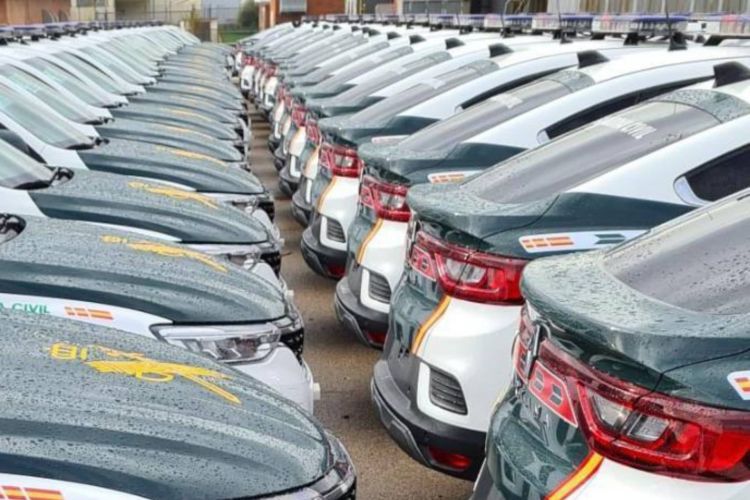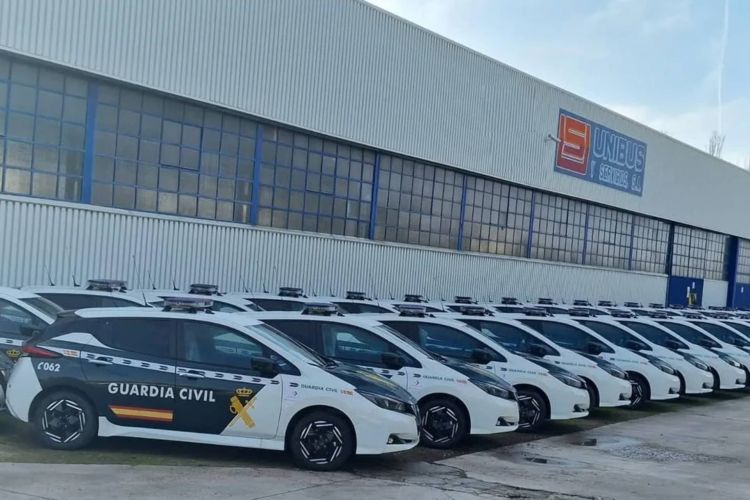The Ministry of the Interior has proposed that the Civil Guard have an efficient and sustainable car fleet, but it seems that theory is different from practice. As pointed out by the Unified Association of Civil Guards (AUGC), more than 200 new patrol cars are standing still. The reason? They are electric… and they have nowhere to charge them.
The AUGC explained on its social networks that, in the official offices of Alcalá de Henares, there are 380 vehicles ready to be released by the patrols. They have not done so because most of them are electric and, as they point out, they do not have specific chargers to fine-tune the batteries.
The key to the problem
The Civil Guard would have received, at the end of May 2022, the necessary budget to carry out the corresponding station. Nevertheless, The contract was awarded seven months later: in December. The one chosen for this was Orange, but this company did not have time to install half of the chargers: it was what had been planned for last year.
Thus, the electric patrol vehicles have not been able to fulfill their functions: carry out the citizen security patrols for which they are intended. Everything indicates that they will not be able to fulfill this task until after summer, taking into account the deadlines for installing the chargers.
The cars: Nissan Leaf and Renault Arkana
The 380 vehicles that the Civil Guard has received are divided into two lots: the total value of all the vehicles, received on December 20, 2022, amounts to 12.5 million euros.
The first (which has a value of almost 7.9 million euros) is made up of 230 Nissan Leaf: This Japanese compact can be equipped with a 150 HP motor and a 40 kWh battery with a range of up to 270 kilometers or with a 218 HP motor and a 60 kWh battery pack with which it can reach 385 kilometers of range. autonomy.
In the second we find 150 Renault Arkana, that have cost about 4.6 million euros. An SUV powered by a 1.3 turbocharged four-cylinder petrol engine, which has 140PS (although there is a 160PS version). This block has a 12-volt light hybrid system, which allows you to disconnect the engine during braking and start driving in a purely electric way. Of course, it does not need to be connected to the electrical network.
More discussion points
The absence of chargers is not the only point of debate. The associations do not end up looking favorably on the choice of the Nissan Leaf due to their autonomy: They believe that its electric nature limits the performances that can be carried out with it. Initially, they would be intended to carry out citizen security patrols and not to pursuits or operations in which a more lively driving is carried out, where autonomy can become a burden.
Also the Seprona motorcycles
The Nature Protection Service (Seprona) has received 157 new electric motorcycles (almost 2.2 million euros). The models in question have a range that does not exceed four hours, with a maximum of 143 kilometers in the city and 63 on the highway. The Independent Association of the Civil Guard (IGC) points out that these figures fall short taking into account the type of services carried out by Seprona.
The response of the Civil Guard
The Civil Guard has responded to these associations through a statement in which it ensures that all electric cars assigned to the different units have “different recharging possibilities such as authorized points, recharging cards and adaptable portable chargers”.
They add that The General Directorate is not aware that “no electric vehicle is stopped because it does not have recharging possibilities.” They also recall that, in 2020 and 2021, they incorporated 184 models of this type into the fleet that are serving in fiscal units, command headquarters and some main posts where there are recharging points or other means to tune up their batteries. Finally, they point out that they have recently received 230 electric cars (a figure that coincides with the Nissan Leaf in Alcalá de Henares) which are currently in the process of being assigned to the units.


